Volar intercalated segment instability (VISI) is a type of carpal instability featuring volar tilt of the lunate. It is less often encountered than dorsal intercalated segment instability (DISI).
On this page:
Clinical presentation
VISI presents in most cases with nonspecific wrist pain and a "clunking" with ulnar deviation of the wrist.
Pathology
VISI can occur because of a disruption of radiocarpal ligaments on the ulnar side of the wrist. The main ligaments involved in this instability are thought to be the ulnar half of the volar arcuate ligament 6 and the lunotriquetral ligament 6,7. It may be static or dynamic.
A VISI alignment can be found in uninjured wrists and therefore considered a normal variant for patients with lax ligaments.
Radiographic features
The main radiographic features are a volar rotation of the lunate and dorsal rotation of the capitate and hamate.
Plain radiograph
Abnormal carpal angles are seen on any lateral or sagittal imaging of the wrist when the wrist is in a neutral position:
scapholunate angle <30°
capitolunate angle >30°
Treatment and prognosis
The mainstay of treatment is surgery, either by early reduction and casting with K-wires or by capitolunate fusion.


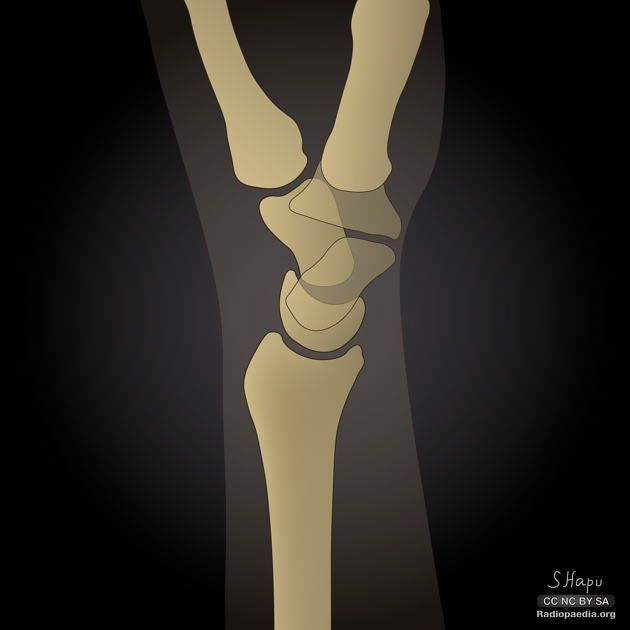
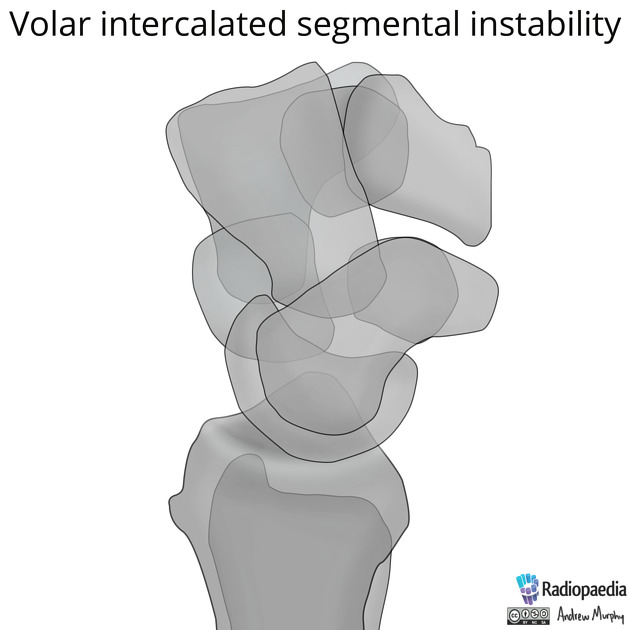
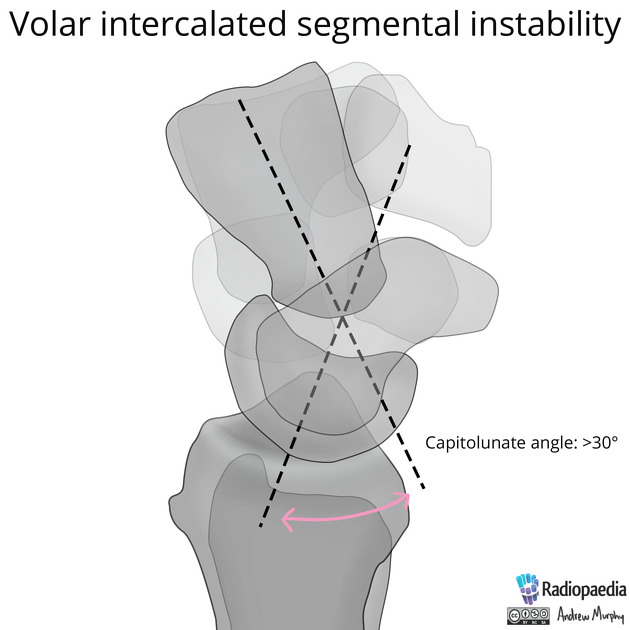
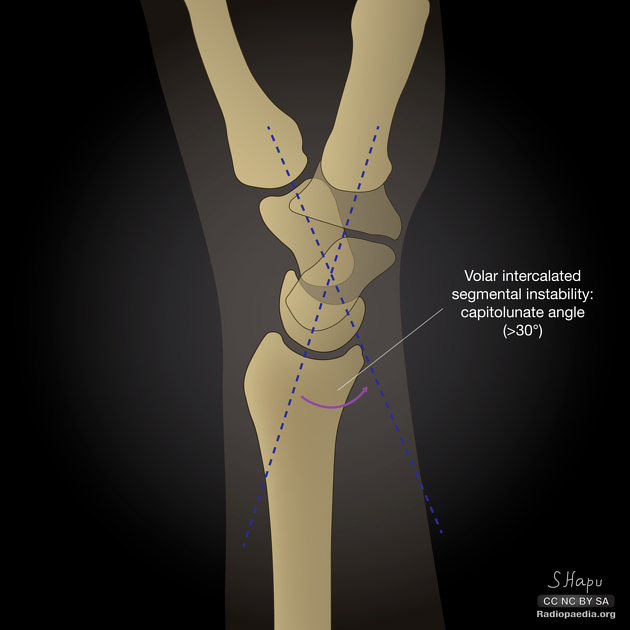
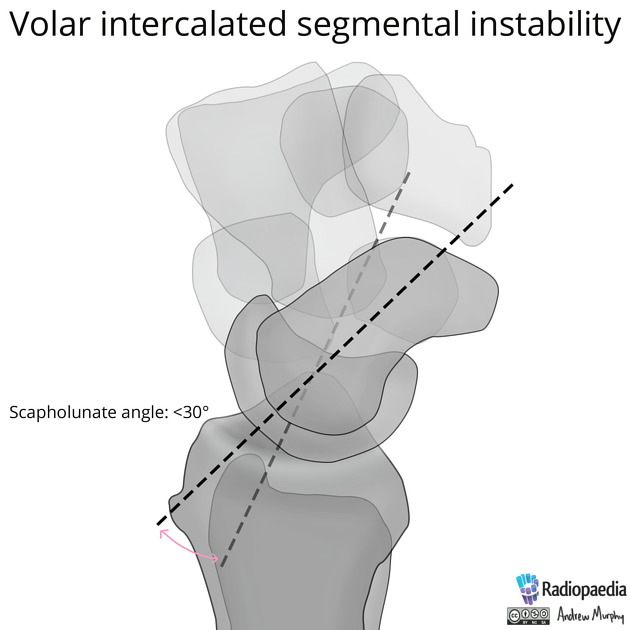
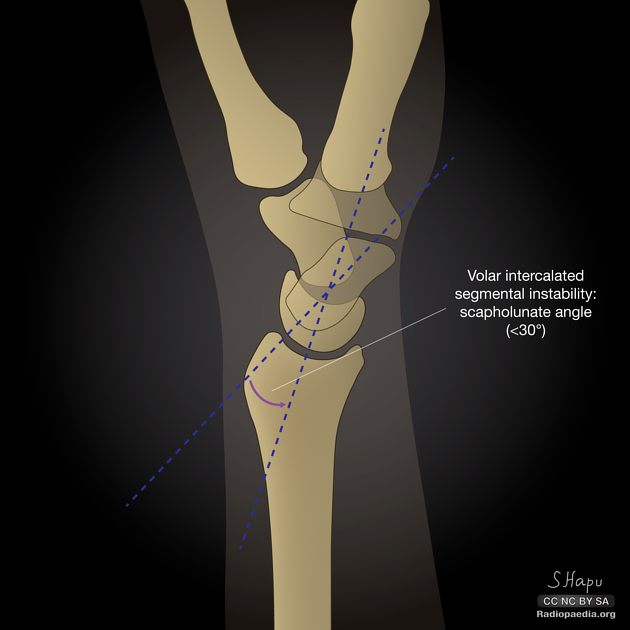
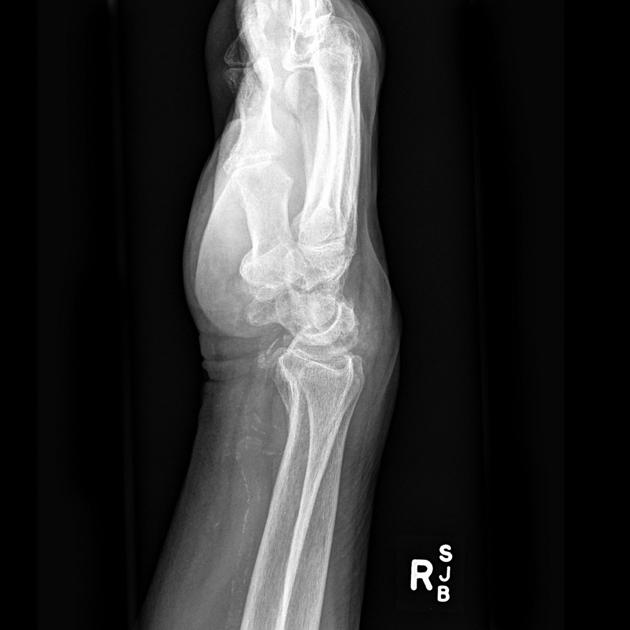
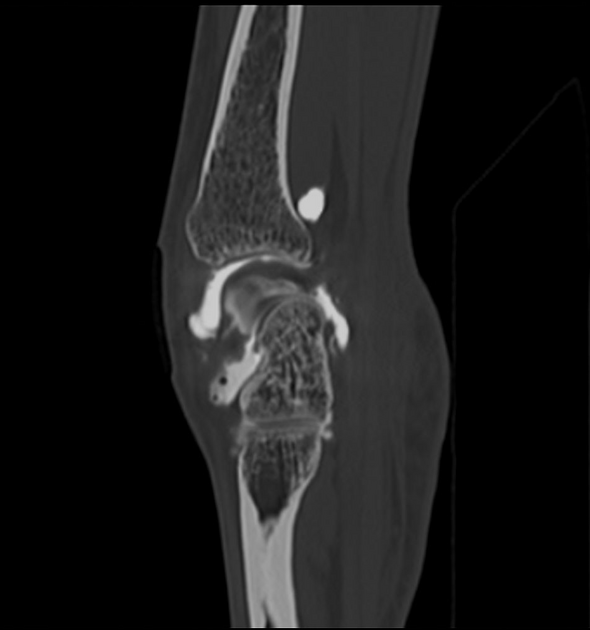
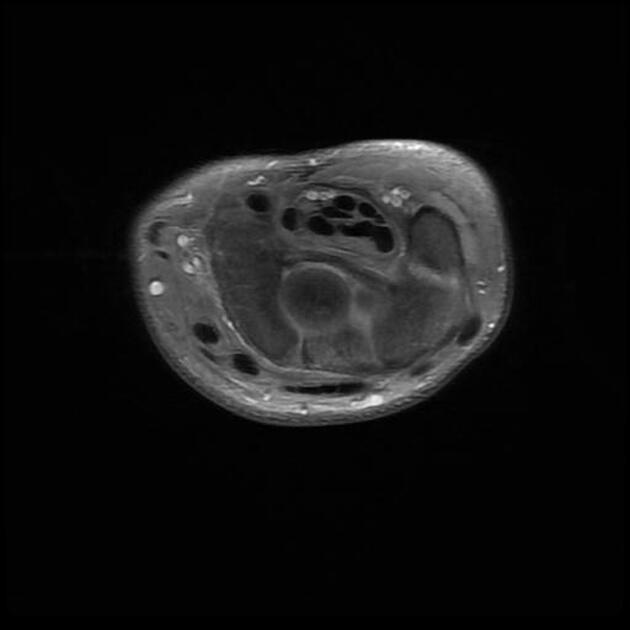


 Unable to process the form. Check for errors and try again.
Unable to process the form. Check for errors and try again.